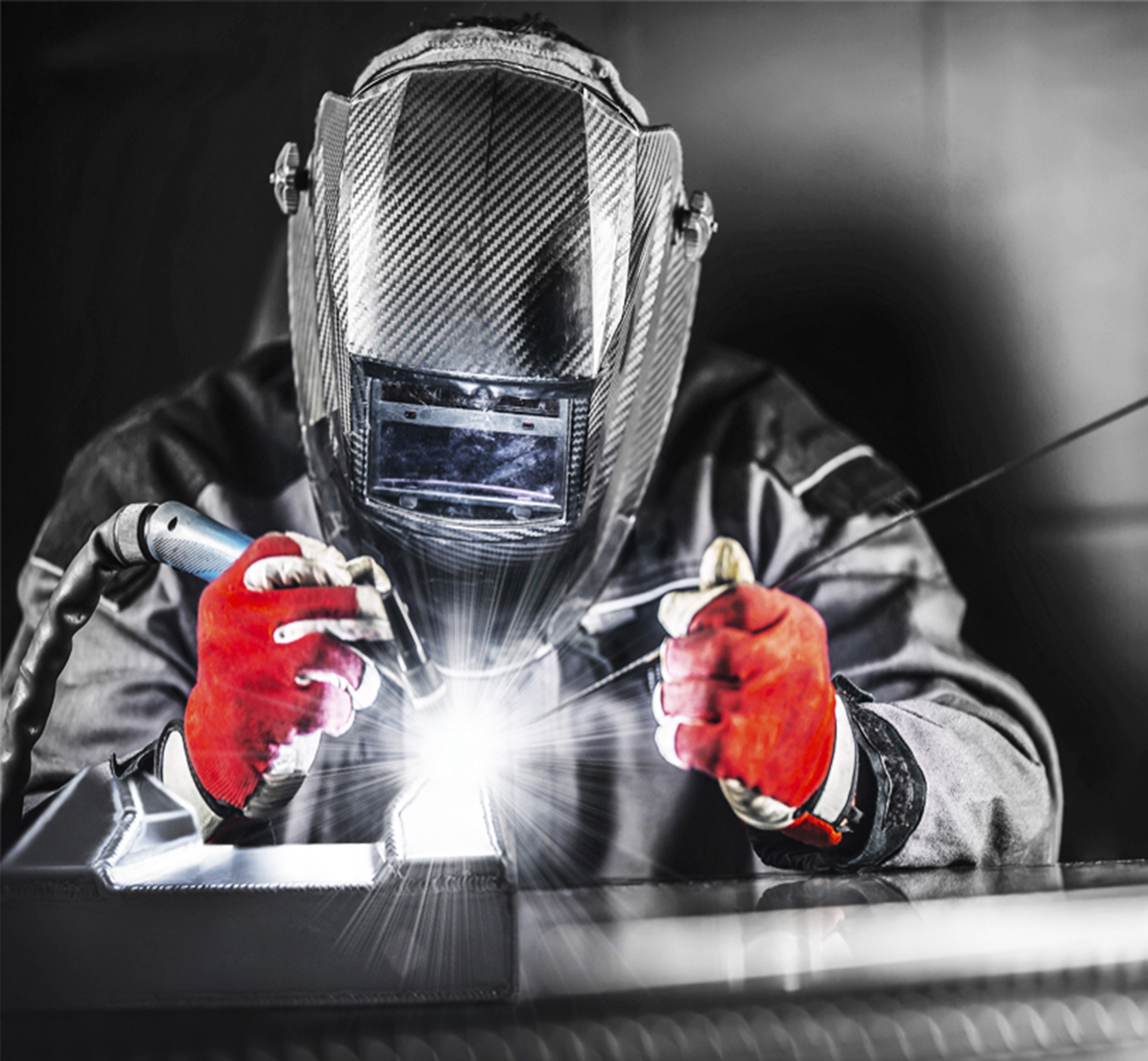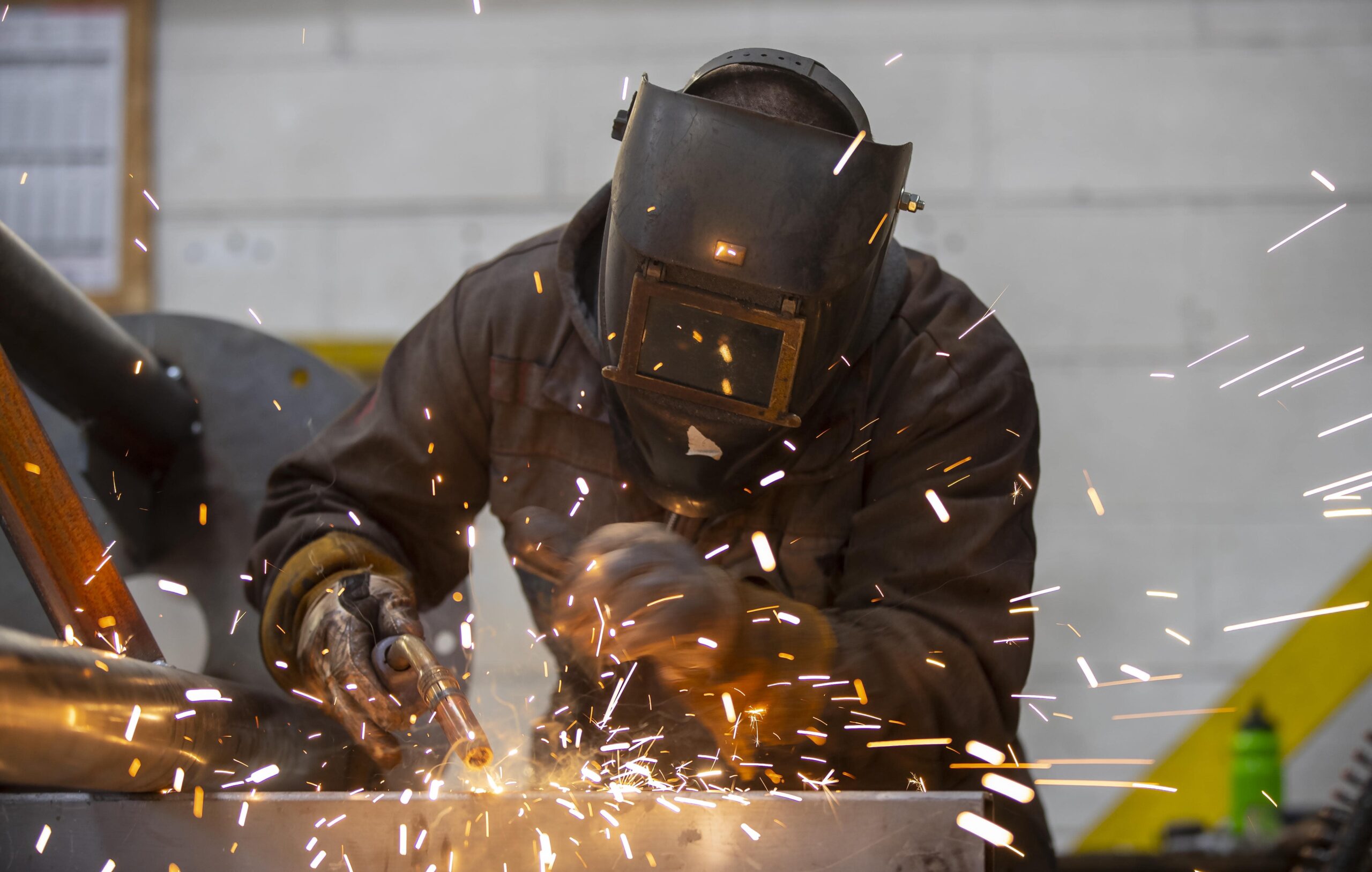Everything about Welding: Trick Insights Into Techniques and Best Practices for Success
Welding includes a range of techniques, each suited for details materials and applications. Recognizing these approaches, such as GMAW, SMAW, and TIG, is necessary for attaining excellent outcomes. Moreover, the ideal tools and safety and security techniques can not be overlooked. As preparation and troubleshooting play essential duties in the welding procedure, mastering these aspects can considerably boost the high quality of the end product. What are the vital factors that guarantee an effective weld?
Recognizing Various Welding Techniques
Welding strategies incorporate a range of methods, each fit to certain applications and materials. Among one of the most common techniques are Gas Metal Arc Welding (GMAW), Secured Steel Arc Welding (SMAW), and Tungsten Inert Gas Welding (TIG) GMAW, also called MIG welding, is popular for its rate and convenience, making it optimal for thin materials. SMAW, or stick welding, is preferred for its simpleness and efficiency in outdoor atmospheres, specifically with thicker steels. TIG welding uses accuracy and control, making it appropriate for detailed job and non-ferrous steels (Belgrade). Each method has its distinct advantages and factors to consider, allowing welders to pick the most effective approach based on the task's needs, material kind, and preferred outcomes. Recognizing these strategies is crucial for effective welding
Important Welding Tools and Tools
While various welding strategies call for particular skills, the ideal devices and tools are similarly crucial for attaining quality results. Important welding tools consists of welding devices, which vary relying on the method-- such as MIG, TIG, or stick welding. Safety equipment, including helmets, handwear covers, and aprons, guarantees security and convenience throughout the procedure. Additionally, fixtures and clamps assist safeguard materials in area, making sure precision in welds. Consumables like welding rods, cable, and shielding gas are additionally vital parts that affect the high quality of the weld. In addition, tools such as cutters and mills help with surface prep work and post-weld finishing, adding to a professional end result. Purchasing high-grade tools eventually improves the efficiency and performance of welding jobs.
Safety Practices in Welding
Appropriate security techniques are vital in the welding market to secure workers from possible threats. Welders should wear proper individual safety equipment (PPE), consisting of safety helmets with correct shading, gloves, and flame-resistant garments. Sufficient air flow is important to lower direct exposure to damaging fumes and gases created during the welding process. Furthermore, workers must be trained in the proper handling of welding devices to prevent crashes. Fire precaution, such as keeping combustible products far from the welding location and having fire extinguishers conveniently offered, are required. Normal evaluations of tools and workspaces can aid identify prospective threats prior to they bring about mishaps. By adhering to these safety practices, welders can produce a safer working atmosphere and reduce threats connected with their trade.
Readying Materials for Welding
Preparing materials for welding is a crucial action that considerably influences the top quality and honesty of the last product (Welding). Proper prep work includes cleansing the surface areas to get rid of contaminants such as dirt, rust, and oil, which can compromise the weld. Methods such as grinding, sanding, or making use of solvents are typically employed to accomplish a clean surface area. In addition, ensuring that the materials mesh comfortably is essential; voids can result in weak welds. It's additionally crucial to think about the positioning and positioning of the components, as this will affect the convenience of welding and the last outcome. Selecting the suitable filler product and ensuring compatibility with the base metals is crucial for achieving strong, long lasting welds.
Tips for Getting High-Quality Welds
Accomplishing premium welds requires interest to information and adherence to best methods throughout the welding process. Correct joint preparation is important, ensuring surfaces are cost-free and clean from contaminants. Selecting the appropriate filler product and welding method based on the base metals is essential for excellent bonding. Keeping consistent travel speed and angle while welding can advertise and stop problems harmony. In addition, regulating warm input is vital; excessive warm can bring about warping and damaged joints. Frequently examining the welds throughout the process enables prompt changes if required. Finally, employing appropriate post-weld treatments, such as cleansing and tension alleviation, can boost the sturdiness and stability of the weld, ultimately ensuring a successful end result.
Troubleshooting Typical Welding Issues
Welding typically presents challenges that can affect the high quality and honesty of the last product. Usual issues such as porosity, irregular weld grains, and getting too hot can arise, each requiring details fixing methods. Understanding these troubles is important for welders to improve their skills and achieve excellent outcomes.
Porosity Problems Discussed
Although porosity can typically be neglected, it remains a critical concern in welding that can jeopardize the integrity of a finished product. Porosity refers to the visibility of small gas pockets within the weld grain, which can lead and weaken the joint to early failure. This trouble usually occurs from contaminants, moisture, or inappropriate shielding gas coverage during the welding procedure. To minimize porosity, welders ought to verify that the base materials are tidy and completely dry, make use of suitable securing gases, and keep constant welding specifications. On a regular basis inspecting the equipment and setting can also assist identify prospective concerns before they show up in the weld. Resolving porosity efficiently is vital for achieving solid, sturdy welds that meet quality requirements.

Inconsistent Weld Beans
Irregular weld beads can significantly influence the quality and toughness of an ended up product. Numerous elements contribute to this issue, consisting of improper travel rate, incorrect amperage settings, and inconsistent electrode angles. When the welder moves also rapidly, a bead may show up slim and do not have infiltration, while relocating too gradually can create too much build-up. In addition, utilizing the incorrect amperage can lead to either undercutting or excessive spatter, both of which concession weld integrity. The welder's technique, such as irregular torch movement, can additionally lead to uneven grain appearance. To alleviate these troubles, welders must concentrate on keeping consistent, controlled motions and making certain correct tools setups to attain uniformity in their welds. Uniformity is key to accomplishing strong and trustworthy welds.
Getting Too Hot and Warping Issues
Excessive warm during the welding process can cause substantial overheating and buckling issues, influencing the architectural integrity of the work surface. These problems commonly materialize as distortion, which can compromise positioning and fit-up, making further assembly challenging. Factors adding to overheating include the option of welding criteria, such as voltage and take a trip rate, in addition to the kind of material being welded. To reduce these problems, welders should preserve consistent travel rate and proper heat input while keeping track of the workpiece temperature level. In addition, preheating or post-weld heat treatment can help ease anxieties brought on by fast air conditioning - Montana Mobile Welding and Repair Fabrication. Routine evaluation and adherence to ideal practices are important in protecting against overheating and guaranteeing the longevity and dependability of bonded frameworks
Frequently Asked Questions
What Are the Career Opportunities in the Welding Industry?
The welding sector supplies varied career possibilities, consisting of settings as welders, inspectors, instructors, and engineers. Specialists can operate in production, building, aerospace, and auto fields, taking advantage of solid need and affordable salaries in different roles.
Exactly How Can I Boost My Welding Rate Without Sacrificing Top Quality?
To enhance welding speed without compromising top quality, one need to practice reliable strategies, maintain tools, maximize settings, and enhance hand-eye sychronisation. Routine training and seeking comments can likewise considerably add to attaining quicker, top quality welds.
What Certifications Are Available for Welders?
Numerous qualifications exist for welders, consisting of those from the American Welding Society (AWS), the National Facility for Construction Education and Research Study (NCCER), and numerous industry-specific organizations. These qualifications enhance employability and show ability efficiency.
Just How Does Welding Influence the Features of Metals?
Welding affects the properties of steels by changing their microstructure, which can bring about adjustments in firmness, ductility, and toughness. Warm input and air conditioning prices throughout the procedure substantially impact these material attributes.
Can I Bonded Dissimilar Metals With Each Other?
